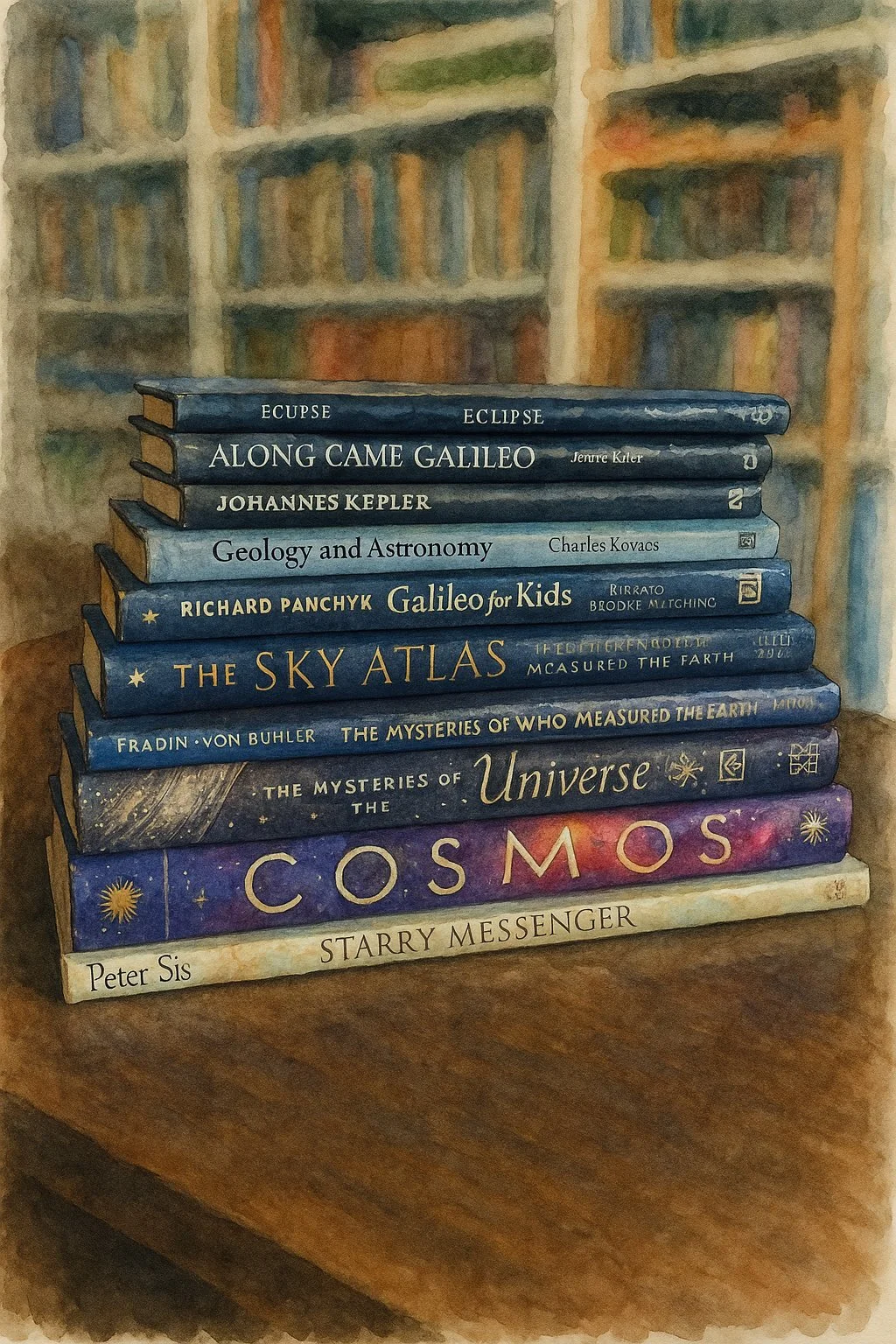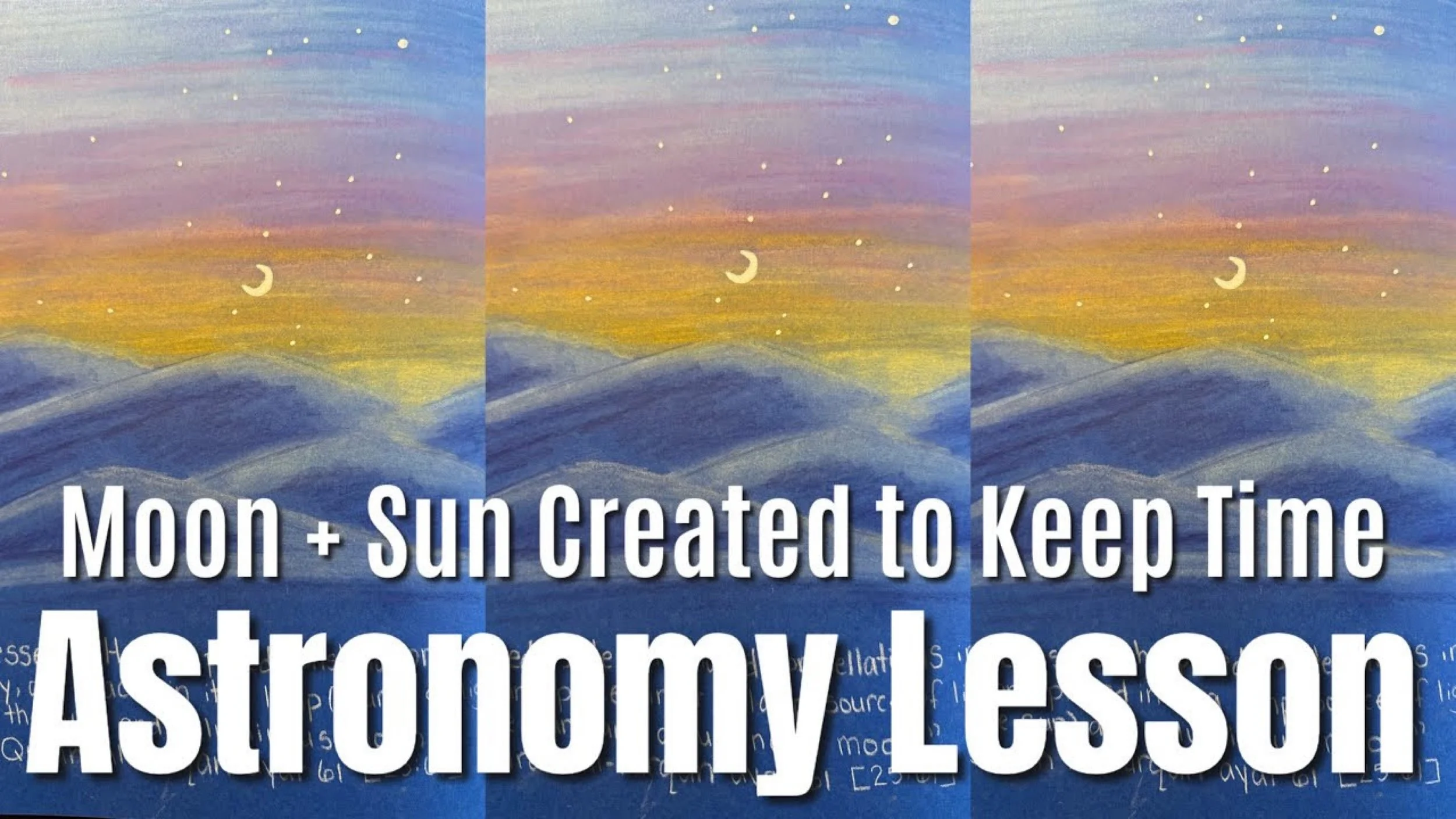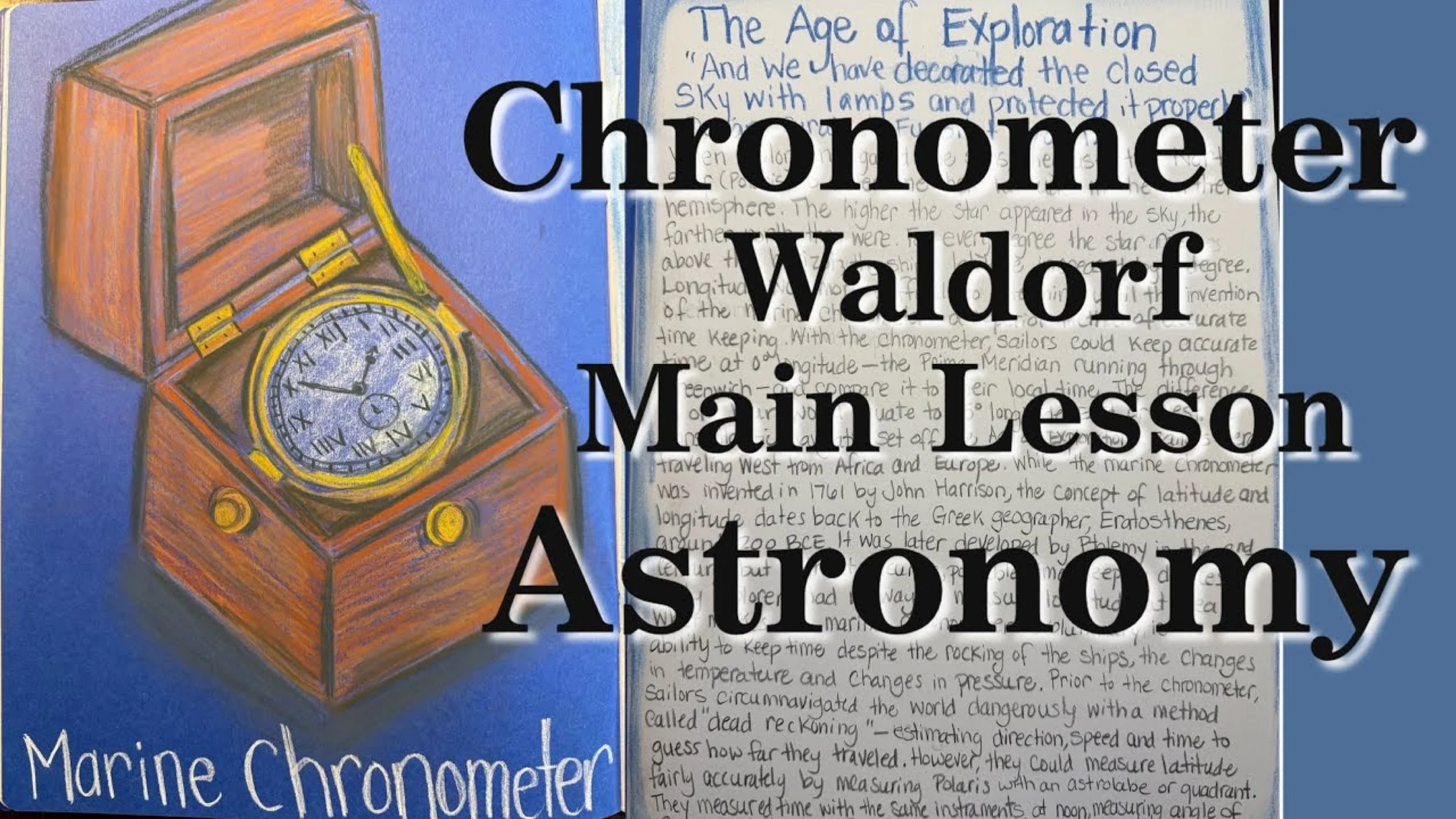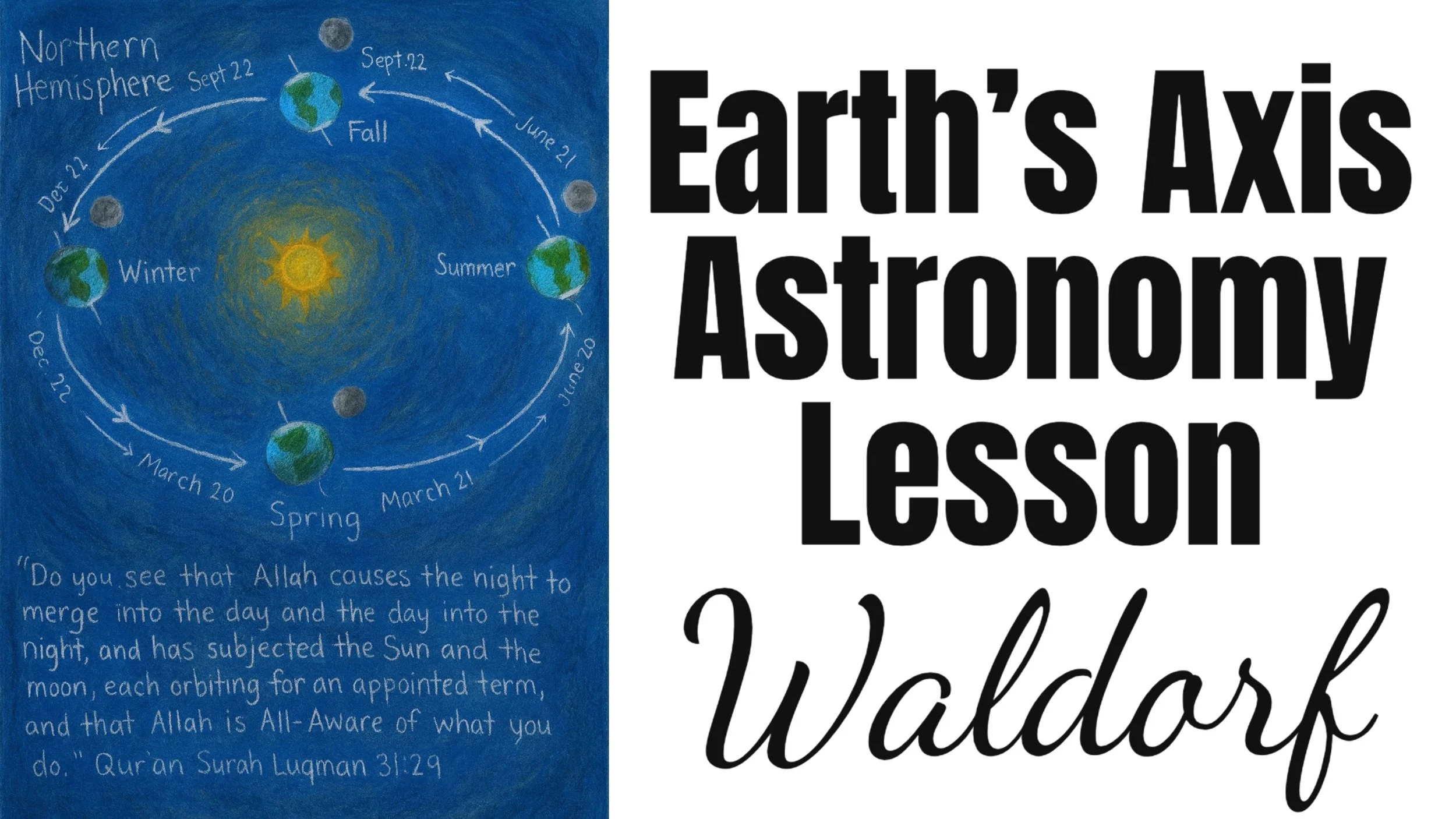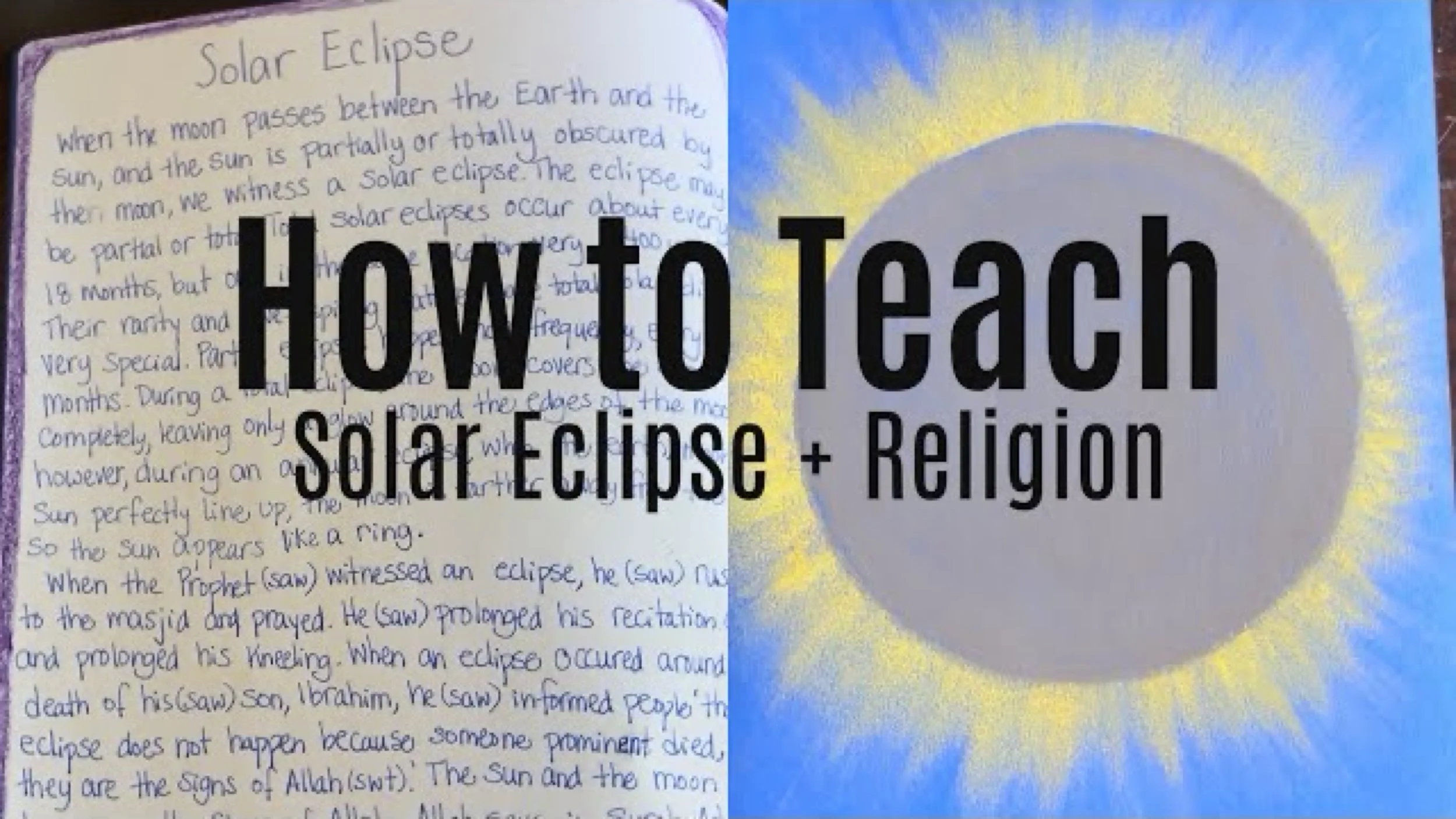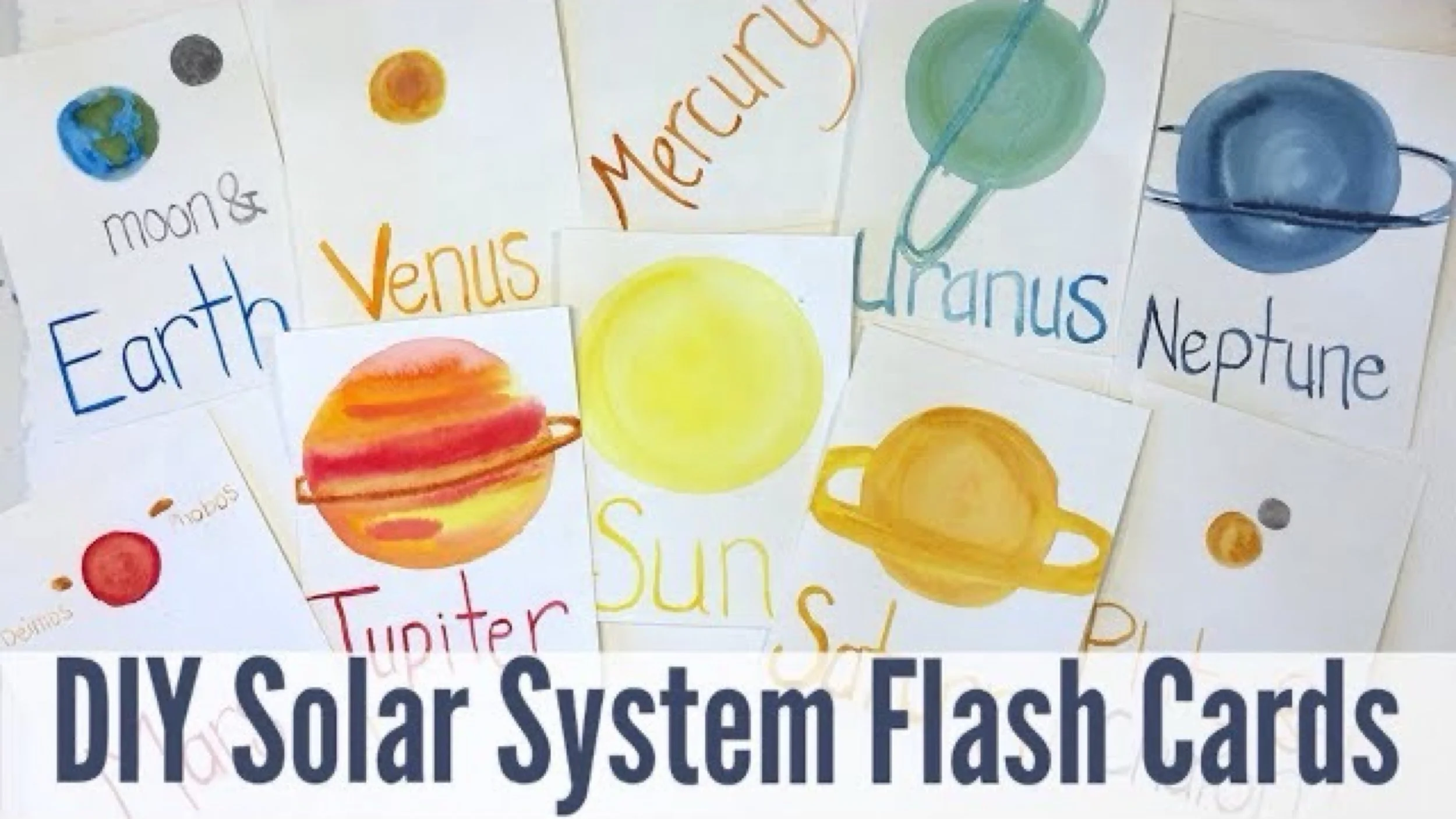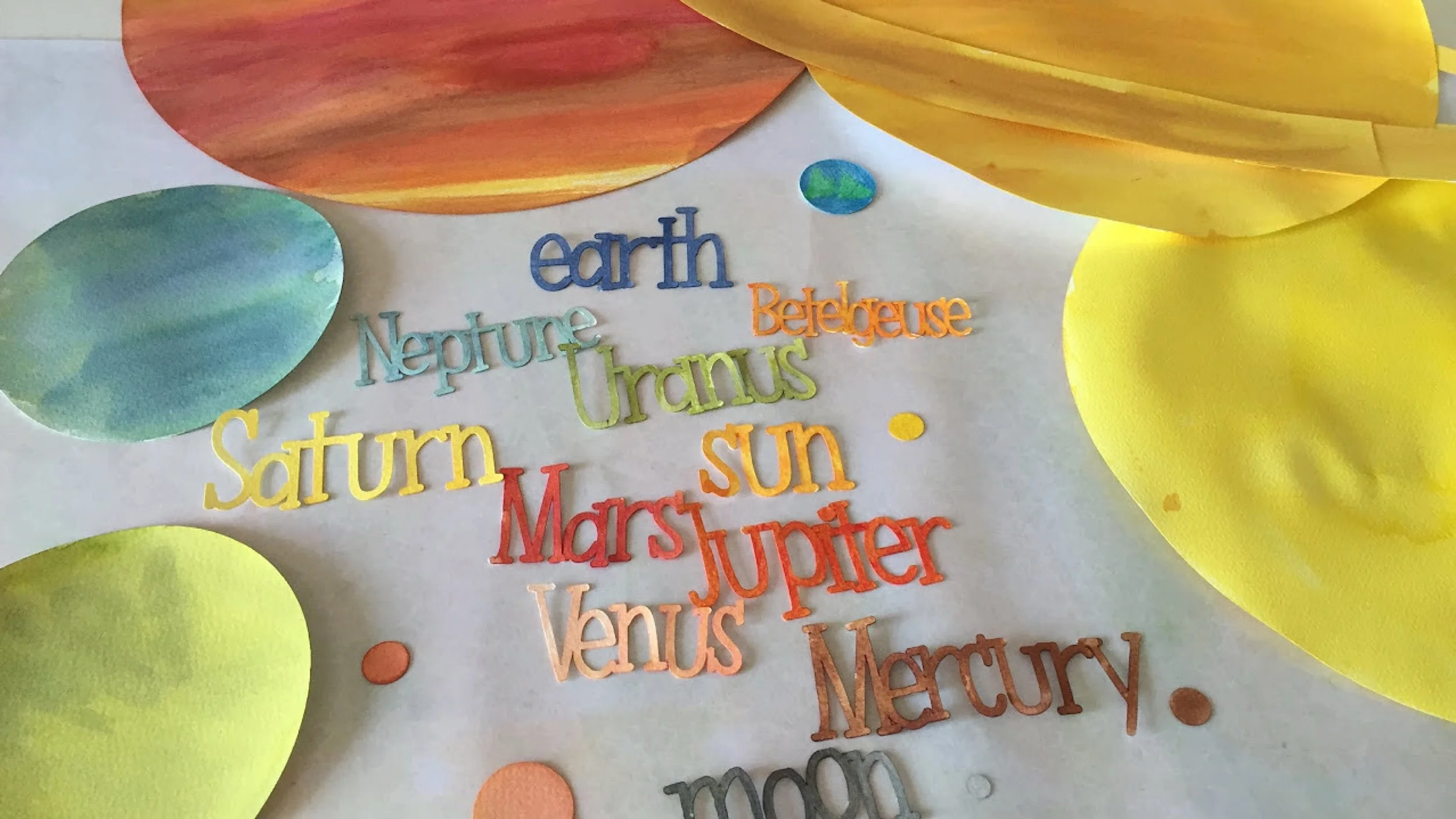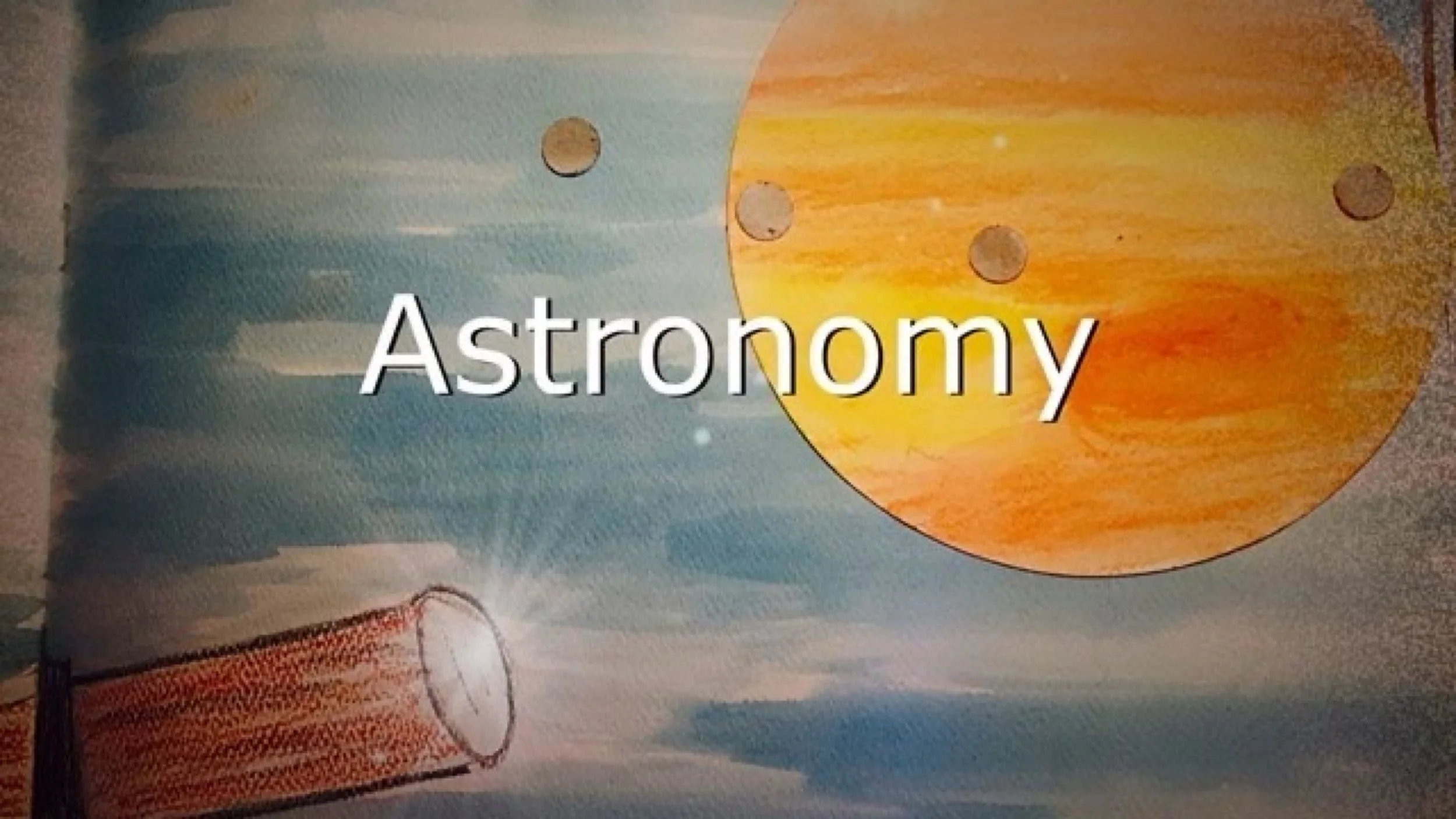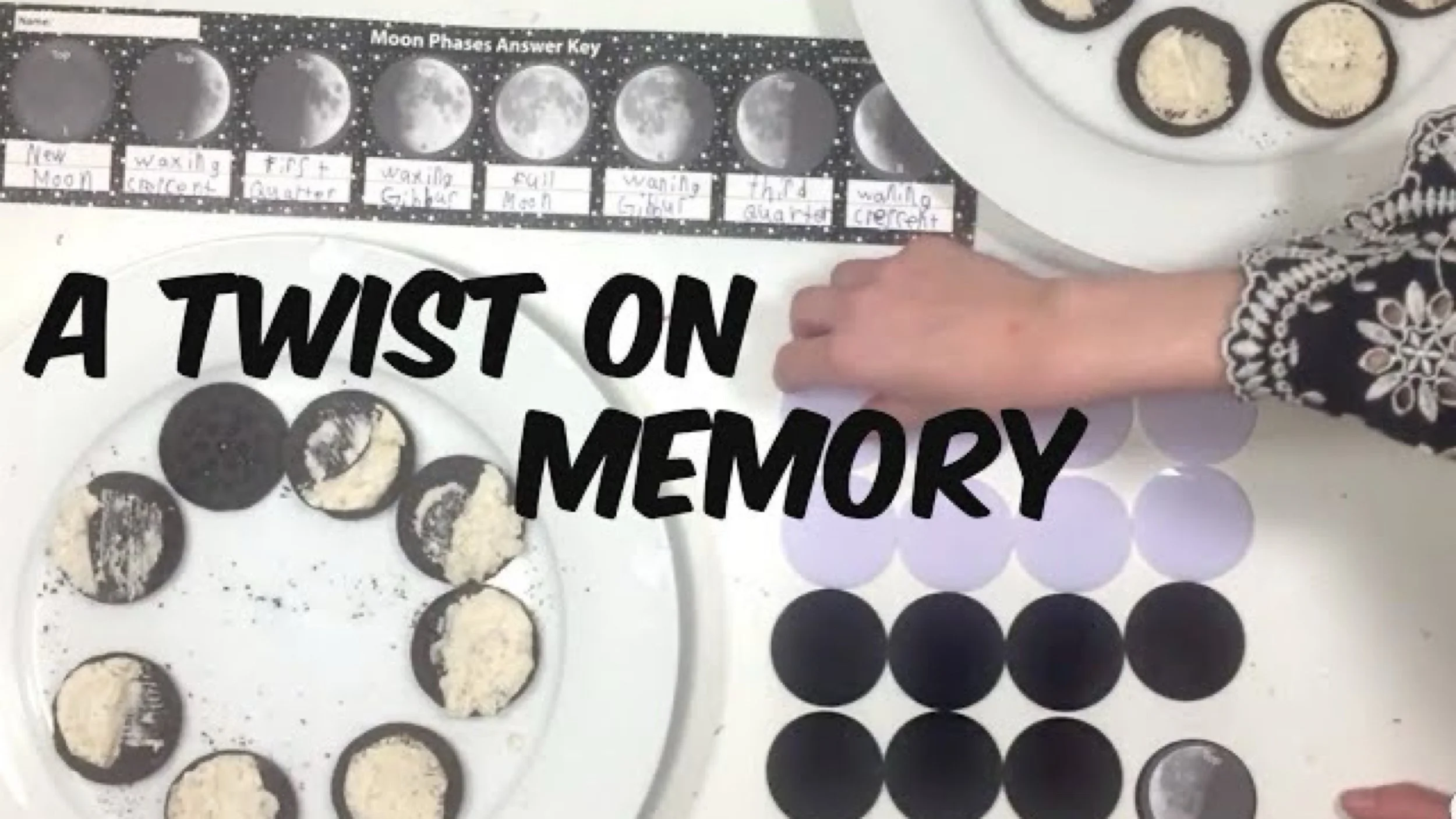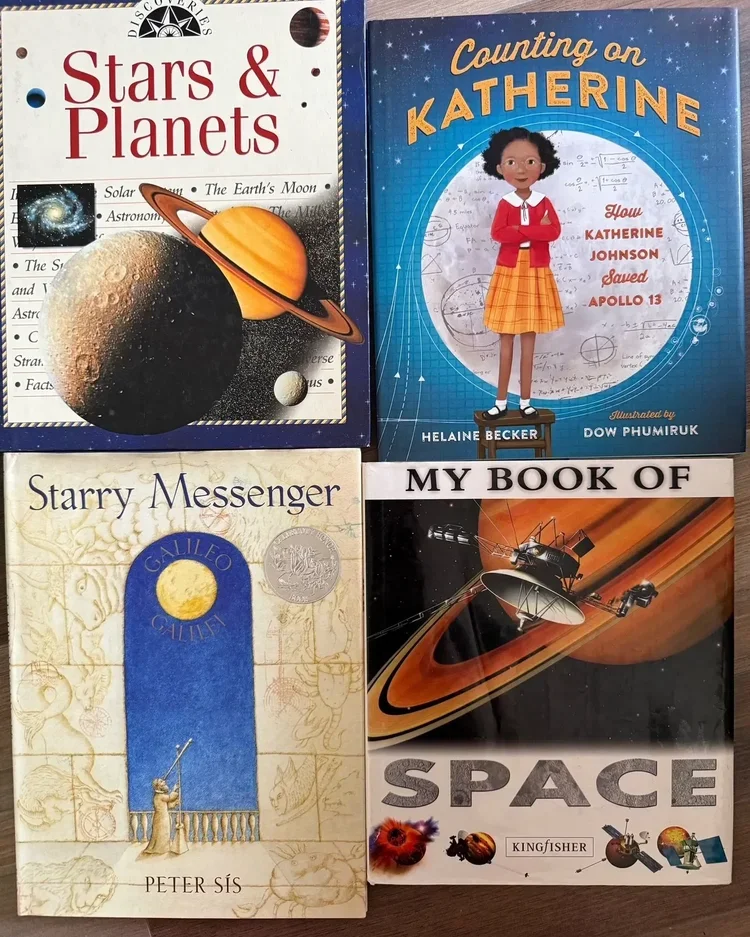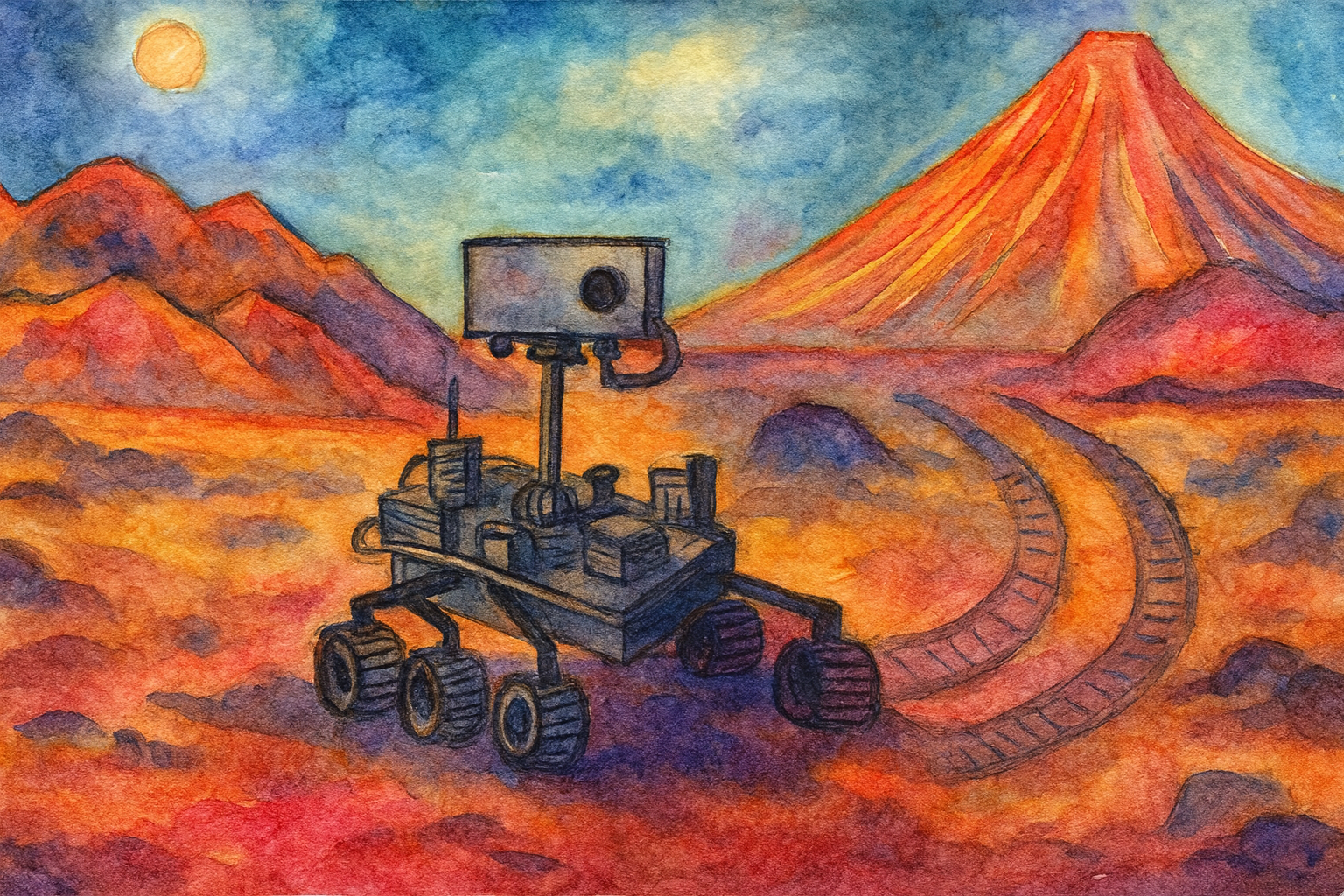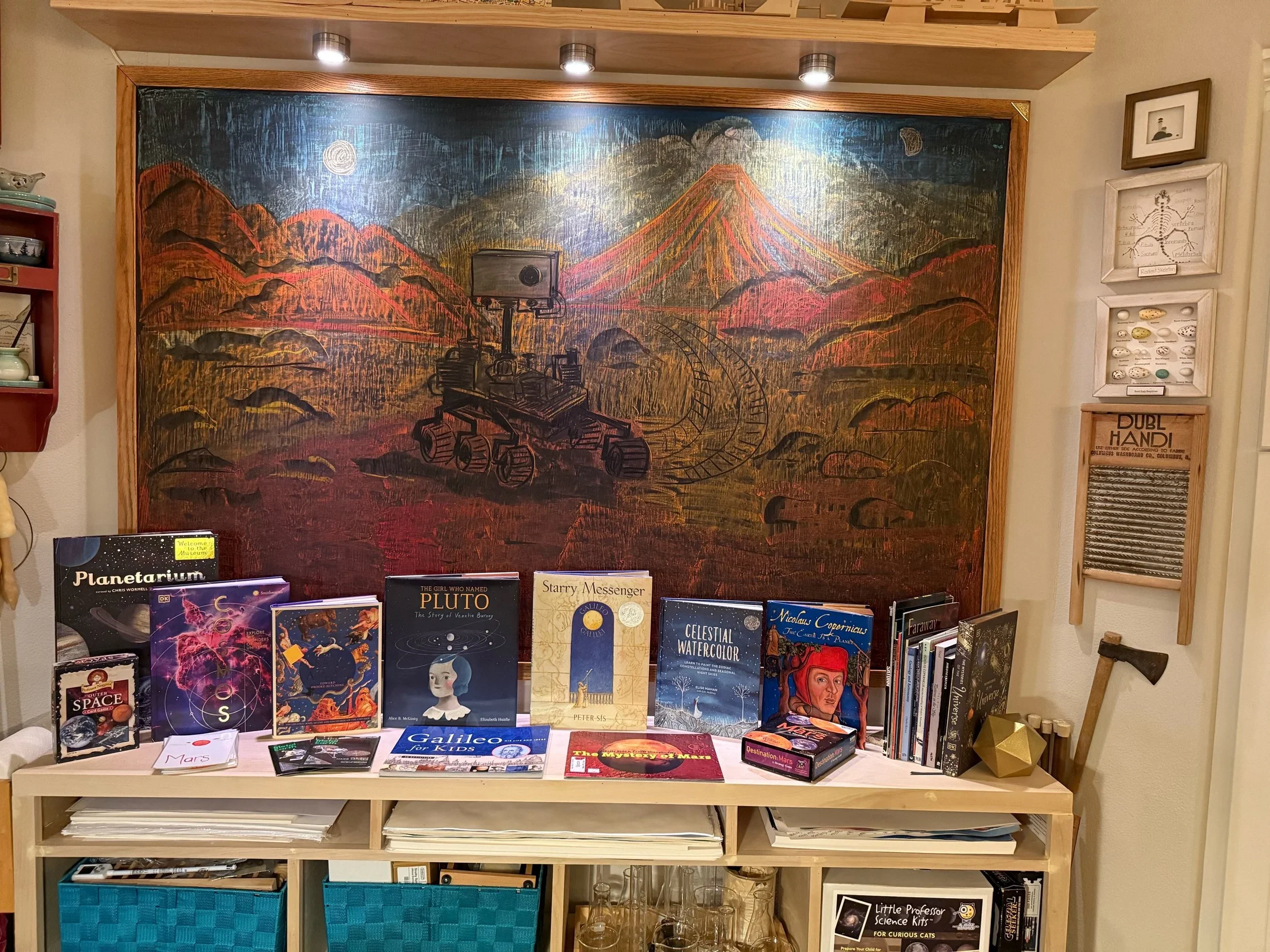
Astronomy
Astronomy
The Waldorf approach to astronomy is quite different compared to an astronomy unit study. When doing our astronomy unit studies, we used the Charlotte Mason approach using living books to create our unit studies and develop our lessons. As long as the book was engaging and beautiful, I would include it as a read aloud. Often the content of these astronomy books did not support our astronomy main lesson block.
Astronomy is presented in Grade 6 in a Waldorf setting. Generally astronomy is broken up into two blocks with the first block, focusing on the constellations and their stories. Since the astronomy block follows the Ancient Rome and Ancient Greek blocks, the stories of the constellations will be familiar to the student. The second block of astronomy relies on biographies of Tycho Brahe, Johannes Kepler, and Copernicus among others. As the students learn about these astronomers, we explore the discoveries and they learn about the geometry of the sky.
We learn about a heliocentric model of our solar system compared to a Ptolemaic model, which was universally accepted throughout the Middle Ages. Lessons on the three laws of motion as discovered by Johannes Kepler are not only delivered orally, but are experienced through hands-on activities. Illustrations accompany all of the astronomy lessons and a main lesson book with blue pages as well as blank white pages is a common notebook that is used for the middle school Astronomy student.
A unique feature of the Waldorf approach to astronomy, as well as other sciences, is that the study focuses on what the student can perceive with his or her own senses. Students learn about the stars in relation to the Constellations, and students learn about the planets in relation to the motion as seen from earth. Specifics about the terrain, atmosphere and duration of day and night on each of the planets is not explored during the Grade 6 astronomy main lesson block. Those concepts are saved for high school and beyond.
There were times I put together an astronomy unit, robust with living books and projects which served multiple ages during a single unit. Other times I put together an astronomy main lesson block that adheres to the Waldorf pedagogy more closely in which our block consisted of more lessons rather than hands-on projects.
Welcome to the Astronomy Post!
You can find resources here that complement an Waldorf astronomy main lesson block or materials you may use to create your own Astronomy unit study. Is there a difference?
Yes! When astronomy is taught in the Waldorf way in grade 6, it's taught from the perspective of the child, his senses and what's observed from earth. The constellations and their stories are central, then the movement of the planets from the observable surface of the planet.
There is awe and wonder every step of the way. When teaching from a unit study approach, often the planets are looked at in detail; their composition, revolution and number of moons are explored.
Often models of the solar system are detailed from the position of being outside the realm of the solar system. While these facts are fascinating, they are not as relatable, engaging or meaningful as the study of what can be seen, perceived and experienced by the student.
Astronomy
-
Resources & Chalk Drawings
in the resource section, you will find the books and materials we used to put together our astronomy unit studies as well as our astronomy main lessons. Astronomy unit studies are which with living books, while our astronomy main lesson block contain fewer resources that support a Waldorf approach
-
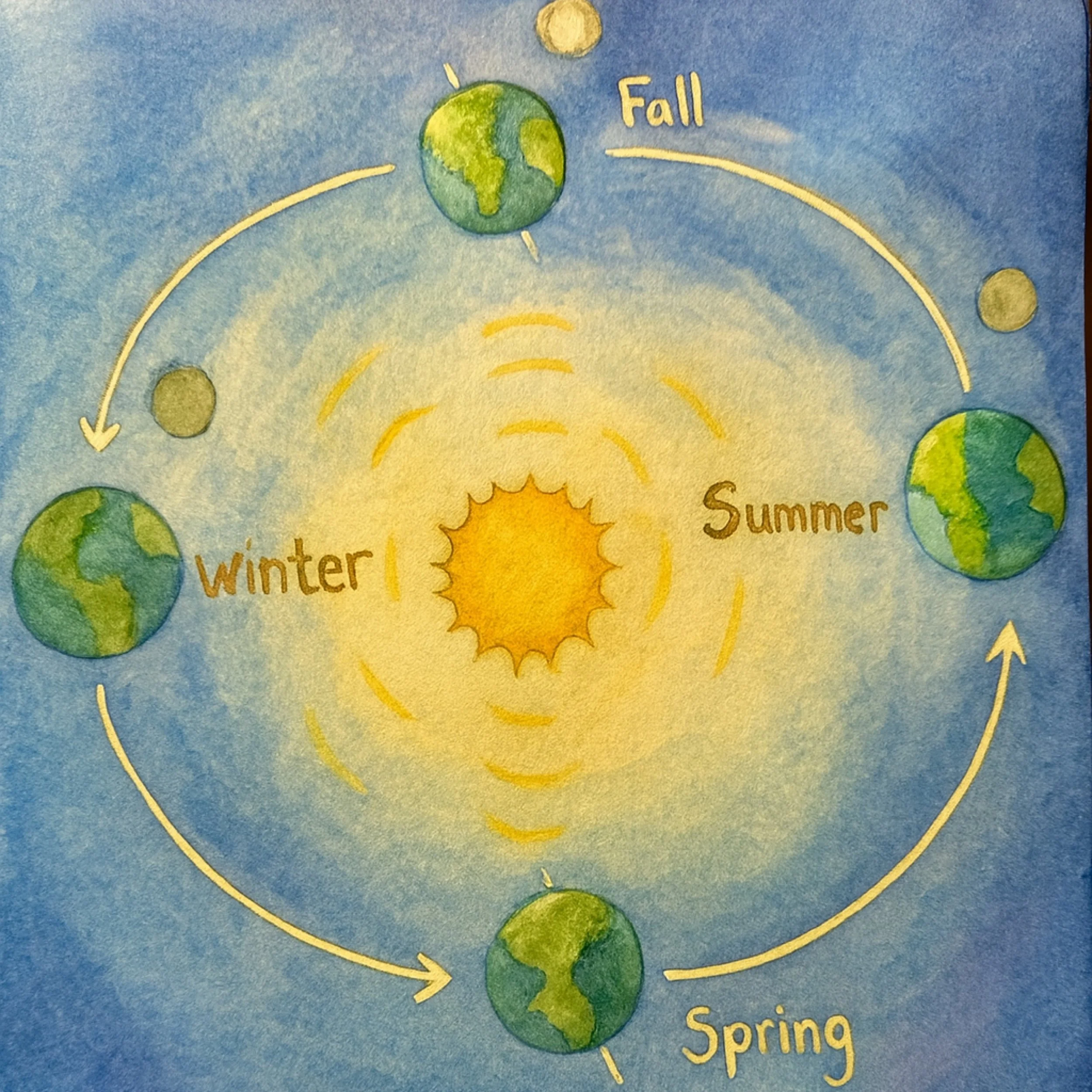
Lessons
Our astronomy lessons primarily focus on the world of curriculum by Live Education and adhere to the Waldorf pedagogy. These lessons were presented to students in middle school, grades 6-8.
-
Projects & Activities
One of the most enjoyable waste to learn is through hands on projects and activities. Granted they take more time to set up, execute, and clean up. For this reason, we may only get to a few projects within one unit. One way to increase your projects and activities is to use premade kits when available.
Astronomy Resources
-
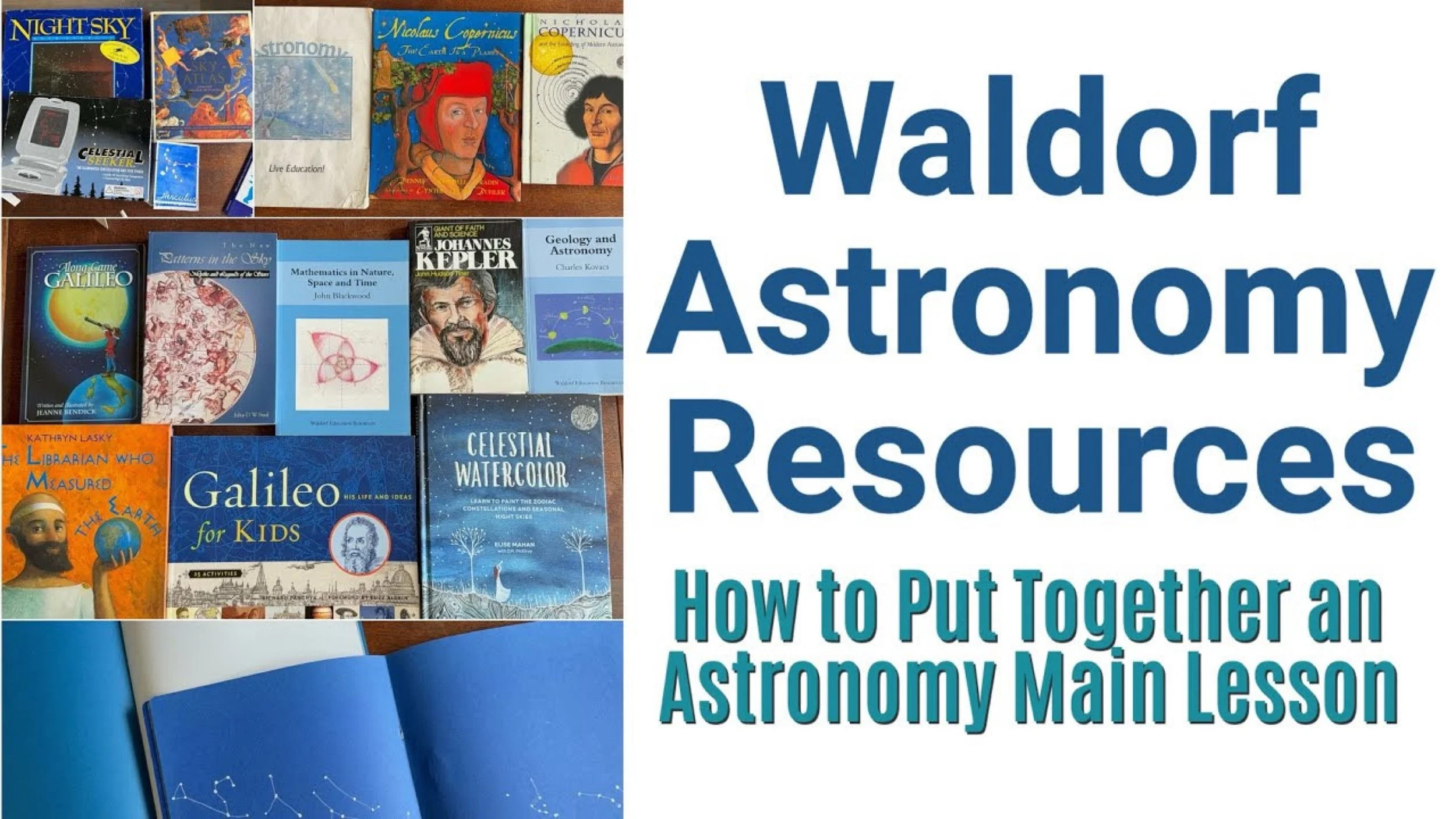
The difference between the Waldorf and a Unit Study Approach to Astronomy
The Waldorf approach to Astronomy comes after the main lesson block on Mineralogy and before the physical sciences of physics and chemistry. Prior to Mineralogy and Astronomy, the young student will be exposed to the natural world through stories and experience.
-
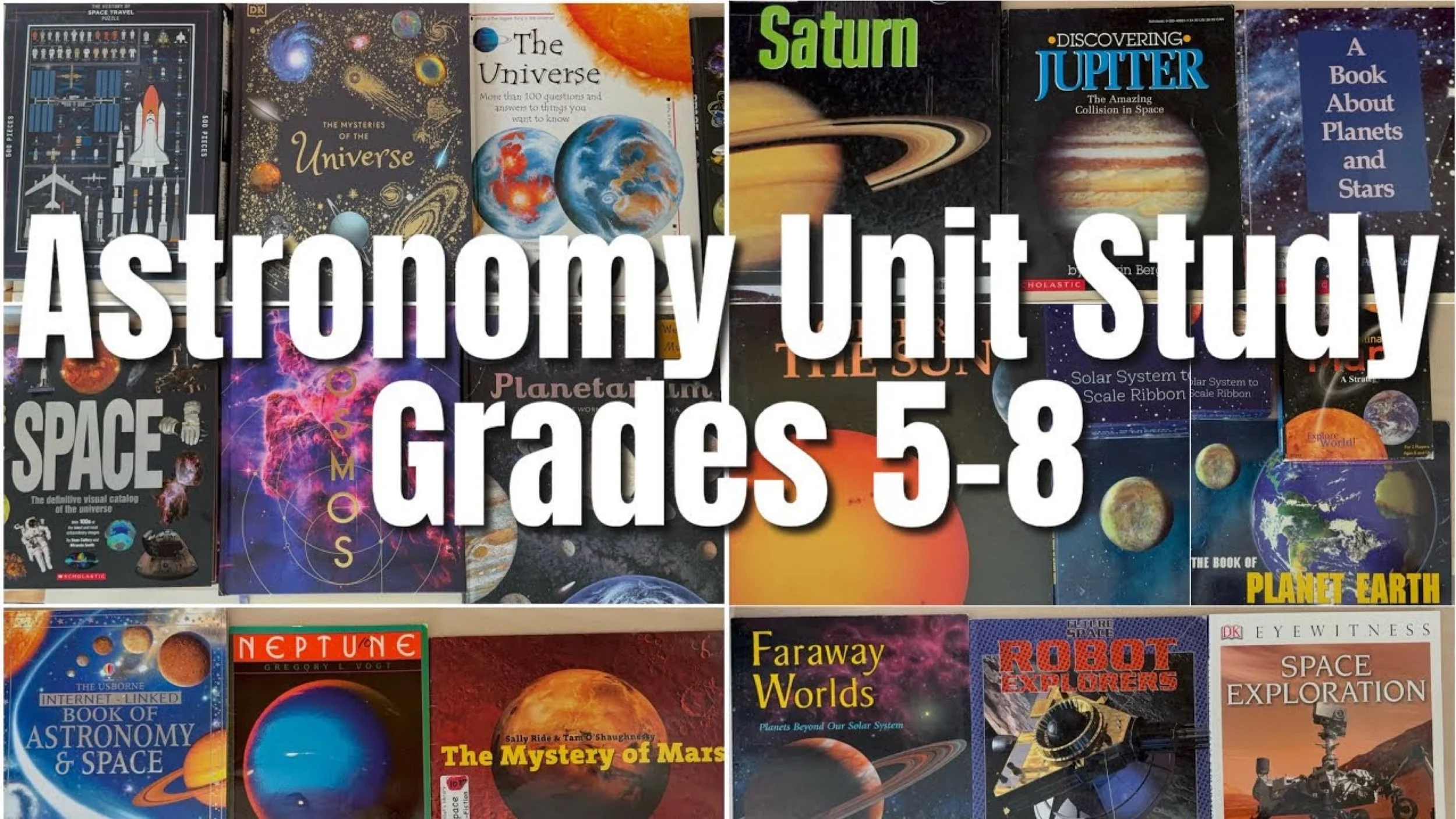
Astronomy Unit Study for Middle School
If a Waldorf approach to Astronomy isn’t what you’re looking for, maybe a unit study is just right. You may choose any duration for a unit study. You may choose to include other resources or subject areas to make your unit study holistic, or you may choose to keep it focused.
-
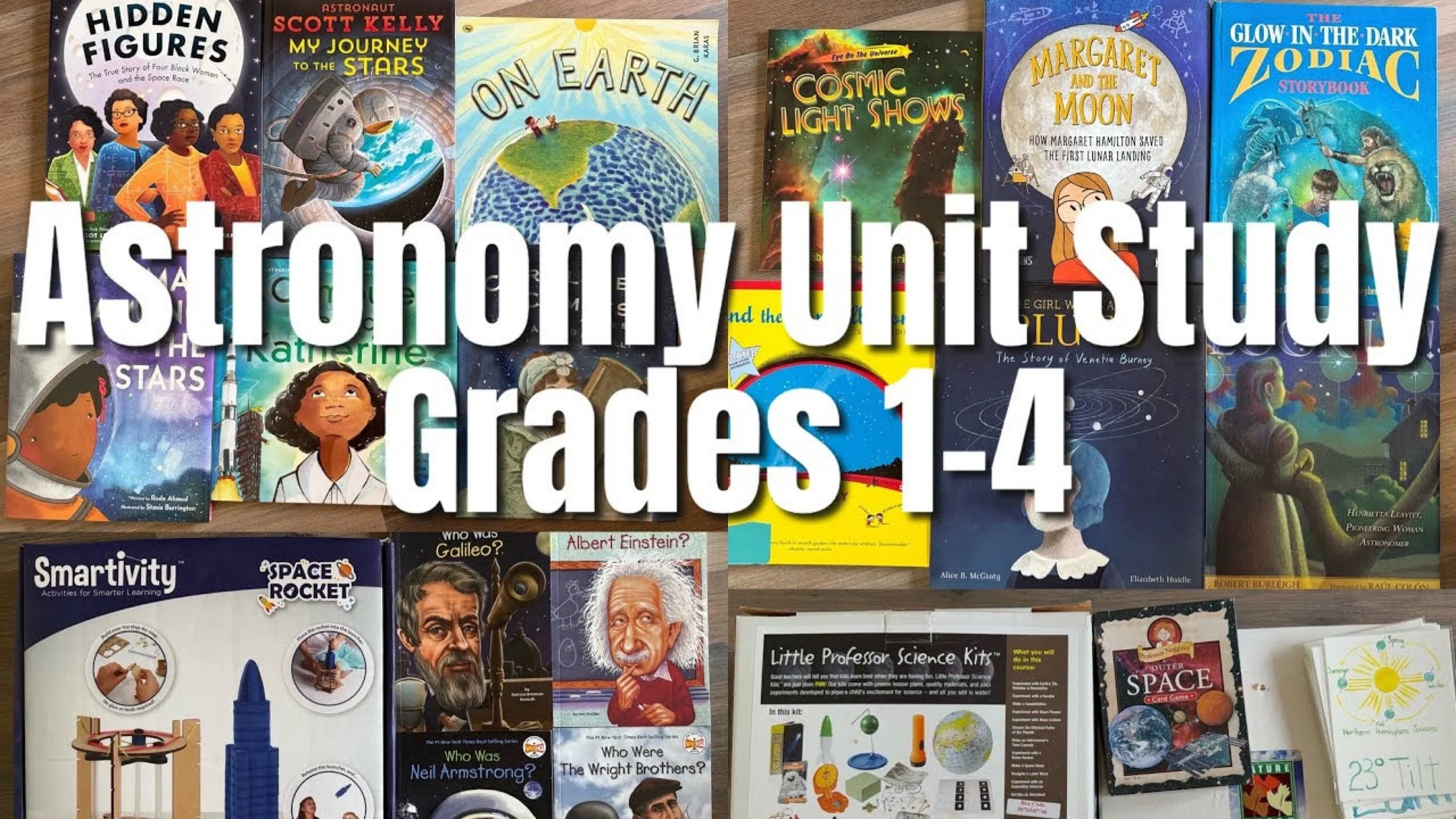
Astronomy Unit for Elementary
Astronomy can be a compelling and imaginative study in which even young children can delight. Putting together a unit study for elementary aged student may include a variety of picture books and simple hands-on projects, but you may also want to include some biographies and games as well.
-
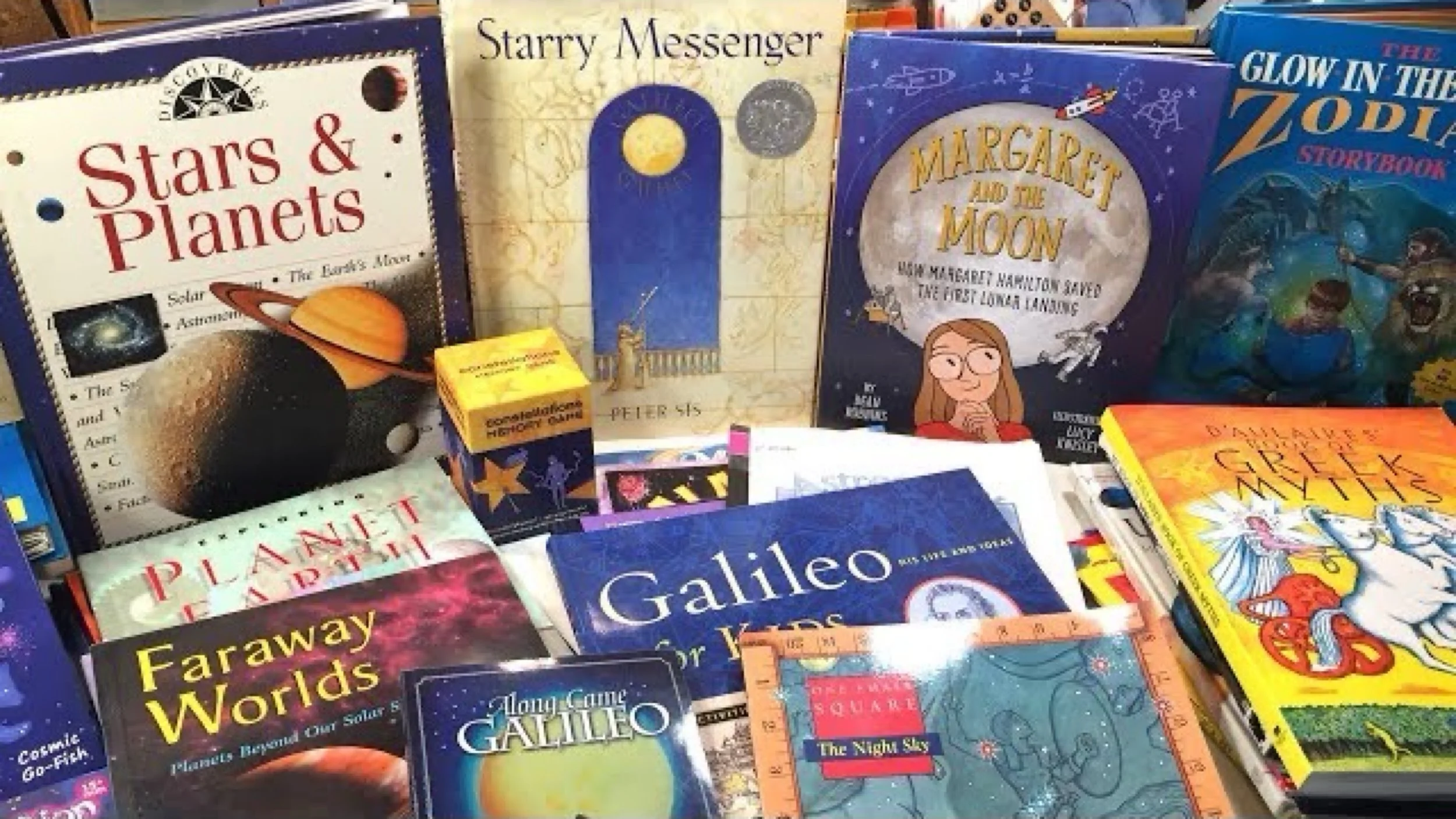
How to put Together an Astronomy Unit Study
Putting together a new unit is always fun, but I have to admit that as the years go by and we circle back to familiar units, a new problem seems to emerge. Choice. What items from my own collection do I choose this time around?
-
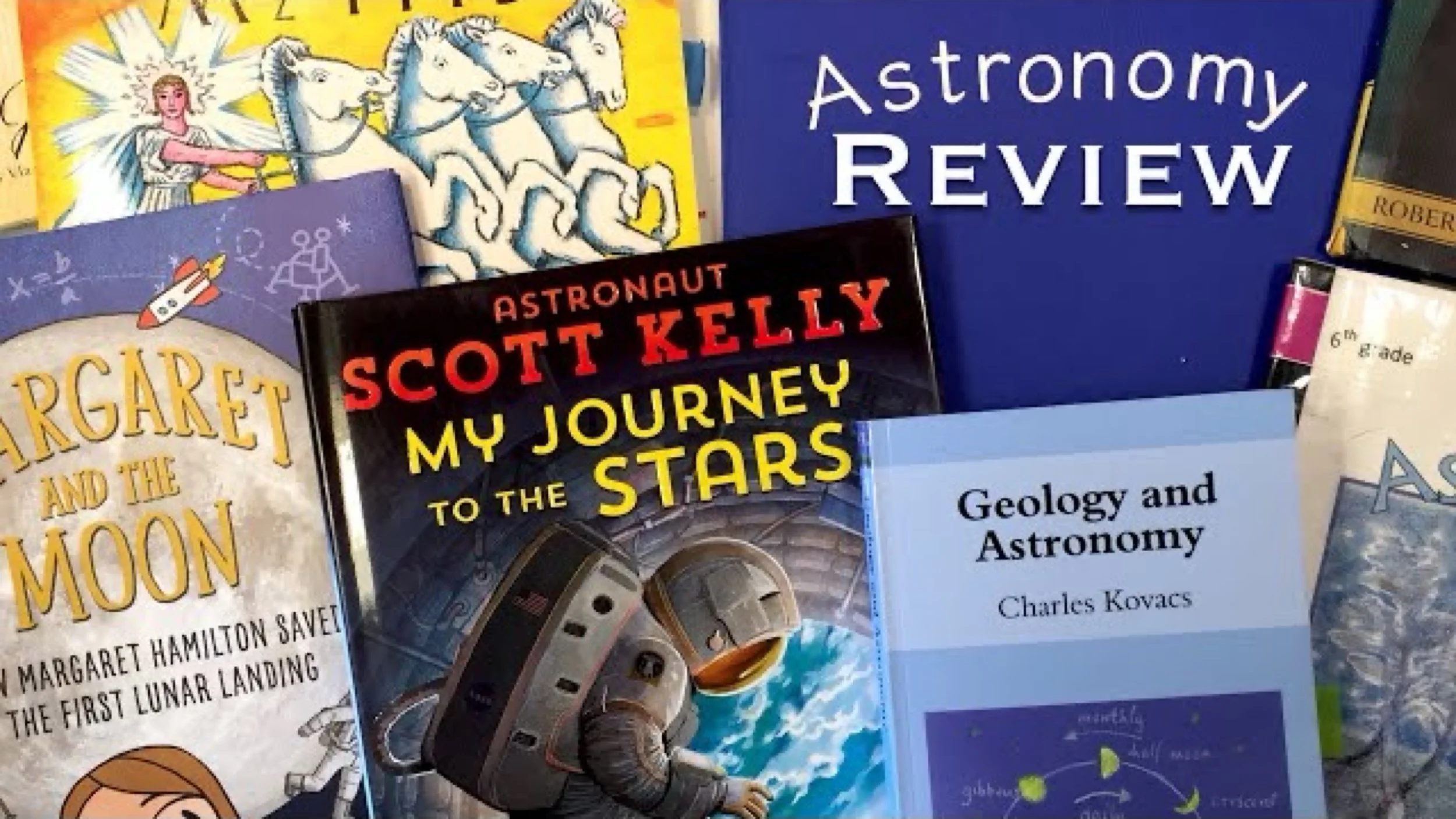
Astronomy Curriculum Review
For the first time in a loooong time we actually finished a unit is the time I scheduled for it with minimal trailing into the next main lesson block. This review covers the materials we used for the first of a two part Astronomy Main Lesson block in which we covered material from our Live Education grade 6 Astronomy book.
-

Astronomy Chalk Drawing
We just started our Waldorf Main Lesson Block for Astronomy. And while we are primarily following the Waldorf pedagogy, we do take liberties often. For this block, we are adding in books on the planets during our opening activities. We are currently fascinated with Mars, Neptune and the moons of Jupiter. For that reason, we have included some additional astronomy books for this block.
-

Books for a Science Unit
I’m sharing some of the books that complement a science unit. I have other books (in addition to these) that make up the bulk of a physics or astronomy unit, but I was asked specifically for fiction or read-alouds for a physics unit and while these are only very loosely based on physics (except for a few like Alice in Quantumland), I think they make good additions.
Astronomy Lessons
Projects & Activities
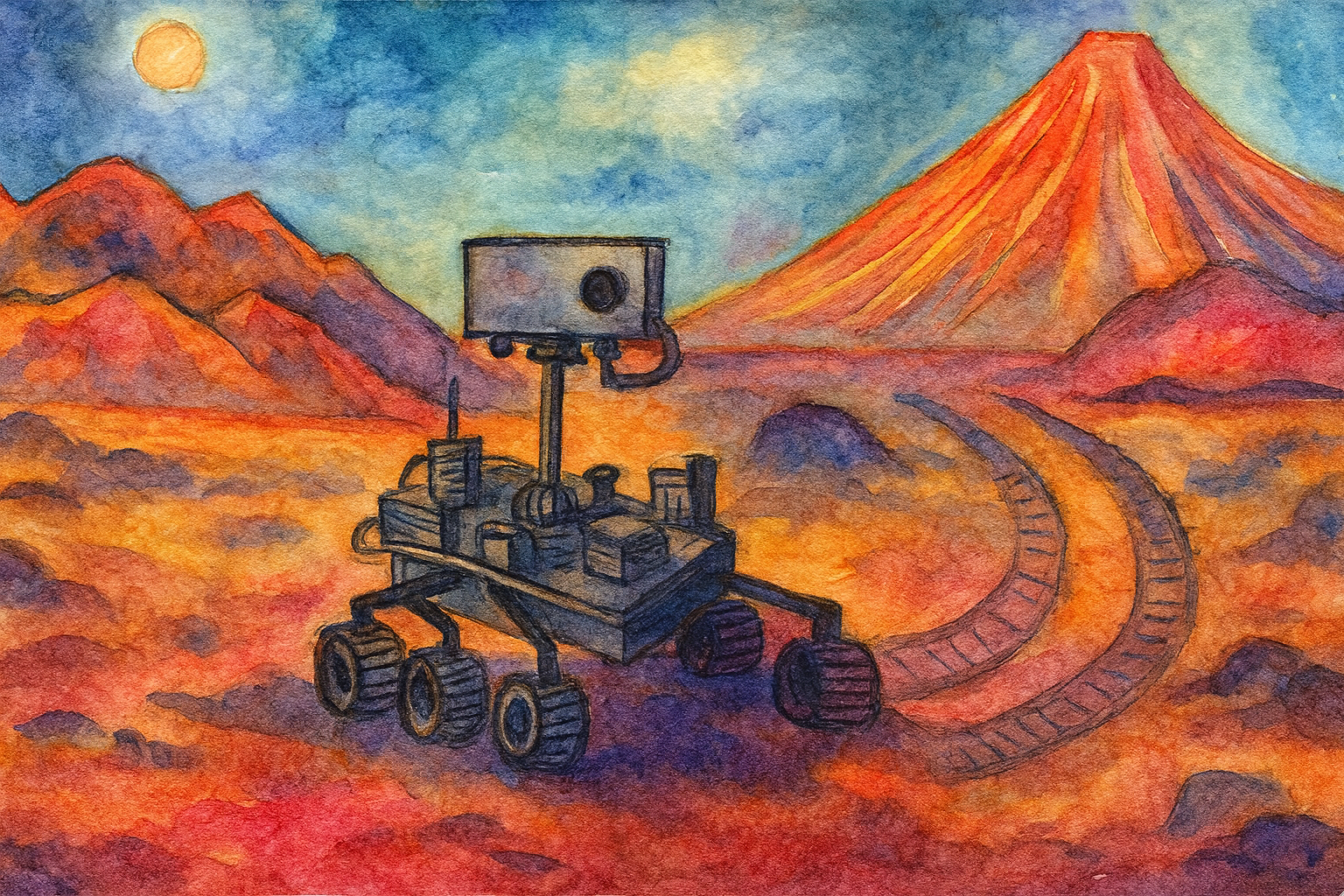
Astronomy Resources
& Chalk Drawings
The Difference Between the Waldorf & A Unit Study Approach to Astronomy
The Waldorf approach to Astronomy comes after the main lesson block on Mineralogy and before the physical sciences of physics and chemistry. Prior to Mineralogy and Astronomy, the young student will be exposed to the natural world through stories and experience. After interacting with the natural world through play or nature walks, the child is introduced to more formal learning in Zoology in Grade 4, and Botany in grade 5.
The life sciences are introduced first to the student. Just like animal materials were introduced first in the younger grades with wool for knitting, followed by plant based materials later on and finally the mineral kingdom with metal work in high school, so too is the Waldorf child introduced to the Animal Kingdom in Zoology in Grade 4, followed by The Plant World with Botany in Grade 5. Also in Grade 5, the Waldorf student has their first formal introduction to geometry. In grade 6, the Waldorf student continues with geometry while being introduced to the Mineral kingdom with the formal lessons in Mineralogy. From our home on Earth, we look up to the the heavens and the sky above.
The grade 6 the student now gazes up at the heavens and ponders the beauty of the sky and stars above. In all the lessons, Waldorf students are taught what can be seen or experienced through their senses while they are young. The unseen world is held until near or post puberty. With the introduction of Astronomy, once again the student receives lessons based on what is observable to the student. The first lessons are on the constellations, the seasons, the rise and setting of the sun and differences experienced in understanding time and season for various locations on the planet. Introducing Astronomy through the constellation allows a gentle, story driven, imagery rich experience before moving into the the history of astronomy, biographies of astronomers, discoveries that were made, data collected and finally the three laws of motion discovered by Johannes Kepler.
In the Waldorf approach to introducing astronomy to the grade 6 or grade 7 student, students are taught the stories behind the Constellations. Some of these stories will be familiar to the student having previously taken Greek and Roman histories and mythologies. Likewise, this is a great opportunity to introduce diversity into the curriculum by sharing stories from other cultures and peoples regarding the Constellations.
Following the introduction of the astronomy block and the stories of the constellations, we may move into observing the sun in relation to the student's position on the planet. The sunrise and sunset is different depending on the time of year. The sunrise and sunset also differ, depending on where you are in the world. At the equator, you can easily tell the time of day as sunrise and sunset are near nearly the same every day. But you can’t tell the season as well, because at the equator there’s a little distinction between the seasons.
Conversely, closer to the poles, you might have several months of darkness in the winter when the sun does not even rise above the horizon. And, in the summer, you might have several months of sunlight as the sun does not set below the horizon. Instead in the summer, the sun circles the sky, but stays low in the horizon. Near the poles, you may not be able to tell the time of day, but you can definitely tell the season. And then, everywhere in between the equator or the polar region, we have a balance.
Following the lessons of the observable sky, the sun, the moon, latitude and longitude, we move into the study of the planets. But the study of the planets will be different than a conventional approach to astronomy. Instead of learning about the terrain and atmosphere of the planets, we are learning about their orbits. With a simple quadrant and telescope we can learn so much about the night sky. With stronger telescopes and space technology, we have come closer to the stars and planets than we ever were before. While, this is very exciting to learn about and to teach to the middle school student, the Waldorf approach would keep us focused on what is observable to the student.
Waldorf Resources
Geology and Astronomy (Waldorf Education Resources) by Charles Kovacs
Celestial Watercolor: Learn to Paint the Zodiac Constellations and Seasonal Night Skies
Galileo for Kids: His Life and Ideas, 25 Activities (Volume 17) (For Kids series)
Ursa Major - Night Sky - DIY Stars Stencil for Ceiling - Summer Constellations
The Sky Atlas: The Greatest Maps, Myths, and Discoveries of the Universe
Nicolaus Copernicus: And the Founding of Modern Astronomy (Great Scientists)
Astronomy Unit Study for Middle School
If a Waldorf approach to Astronomy isn't what you're looking for, maybe a unit study is just right. You may choose any duration for a unit study. You may choose to include other resources or subject areas to make your unit study holistic, or you may choose to keep it focused. However you choose to do your unit study, a lot of homeschoolers find it beneficial to have a spine text to keep their unit on track. While I have both used such a text in the past, I also have done so without one. If you choose to have a spine, I have included a number of books that would suit that option. Then, I include several, often too many, additional books to support the main text. I often homeschool multiple ages (with the exception of the last couple years of homeschooling), so including younger options like pictures books along with grade level options for middle school as been a practice of mine for many years, even decades.
Resources
Astronomy Unit for Elementary
Astronomy can be a compelling and imaginative study in which even young children can delight. Putting together a unit study for elementary aged student may include a variety of picture books and simple hands-on projects, but you may also want to include some biographies and games as well. The resources shared are suitable for all ages, but may be especially enjoyed by students grade 1-4. While some of the resources I have collected over the years are outdated and hard to find, the resources for elementary are newer and hopefully easier to source. If not, I recommend getting books that are similar rather than exact, especially because often outdated books contain material that’s been revised. Some of the books I have for our astronomy unit date back to the 1980s and 1990s! While we navigate the outdated material with ease and humor, I advise purchasing newer resources when possible, and especially in subject areas where modern technology provides new and fascinating discoveries.
Resources
How to put Together an Astronomy Unit Study
Putting together a new unit is always fun, but I have to admit that as the years go by and we circle back to familiar units, a new problem seems to emerge. Choice. What items from my own collection do I choose this time around? Our units are filled with various resources from games, to books, to projects and kits, to fiction and non-fiction books. Do we stick to old favorites or try new resources? This time around we did a short 3-week main lesson block inspired almost entirely by our Live-Education Waldorf curriculum. I will show you the materials we used for that main lesson block as well as materials we have used or plan to use for our unit study on Astronomy. We will return to our Astronomy main lesson block after we do our history units for the year. Currently, I've decided to split up large main lesson blocks into two smaller ones as recommended in the curriculum. The reason why we don't do this often is that once we get engrossed into a topic area, we like to see it through before moving. Three weeks is such a short duration for our units that it seems right when we are getting into the meat of the material, it's time to move on. However, one of the downsides to stretching a unit until all the material is covered is that there is a saturation of information and soon we just can't squeeze anything else in. Giving a few weeks to rest between main lesson blocks means that the information learning in one main lesson block as an opportunity to be digested and processed while new different material is being learning. So, this time around, this unit will be short and only feature the material shown at the beginning of the video as well as the games and some projects. When we revisit this main lesson block, I'll post the new updated lesson plans on my website (link below to the current 3-week lesson plan), and they will also be available on Homeschool Panda.
We've been homeschooling since 2003, and in that time, we've collected a lot of resources for our unit studies. You certainly don't need this much. One good non-fiction book as well as some picture books, a book on mythology, some books on astronomers or scientists and some games and projects would round out a unit study very well. You can see all the projects we did for this unit for the years by checking out this playlist.
Check out the lesson plans on Homeschool Panda. Steps to import lesson plan:
Step 1: Log into Homeschool Panda
Step 2: Click on "Lesson Planner” from left hand pane
Step 3: Click on “Import Lesson Plan” located on the top right
Step 4: Paste this link and Click on "Import Lesson”
Check out the lesson plans here if you don't use Homeschool Panda:
Astronomy Curriculum Review
For the first time in a loooong time we actually finished a unit is the time I scheduled for it with minimal trailing into the next main lesson block. This review covers the materials we used for the first of a two part Astronomy Main Lesson block in which we covered material from our Live Education grade 6 Astronomy book. We'll do the second part at the start of the new school year, and it will be a longer unit with more math and science. For this part of the unit, we focused on the constellations and used a main lesson book especially designed for astronomy to draw our constellations and write narrations. We scheduled three weeks for this unit. There are minimal projects that coordinated with this unit, but there will be more during our second unit.
We used a few picture books, a book on Greek Mythology, our Live-Education Waldorf curriculum on Astronomy and my favorite: Geology and Astronomy by Charles Kovacs.
This is the review I left on Amazon for the Charles Kovacs book Geology and Astronomy:
"This book was compiled using notes Kovacs wrote in preparation for teaching his students in Edinburgh, Scotland. It's been edited for book format, but still read like a lively lecture. You can either read the lessons straight out of the book or retell them in your own words if you wish to be more authentic with the Waldorf teaching principles. The Geology section (14 lessons) can serve as inspiration for how to teach Geology and Mineralogy as the examples in the book are relevant for students in that part of the world. We chose to read it as is and gleaned much from the content. The chapters are short, don't contain too much new content and are written in spoken language (as if you were listening to the teacher present it in class).The Astronomy section (27 chapters) begins by relating the sun to our heartbeat as a means to connect the child to the cosmos. The analogies continue throughout the chapters. Great connections are made between the seasons and day in relation to positions on the planet that I haven't seen made elsewhere. Lessons are enhanced by drawing your own diagrams to complement the lesson, though the book comes with many simple drawings to explain the content. Unlike our Waldorf curriculum which begins the Astronomy block with the constellations and the stories of Ancient Greek and Roman mythology, this book jumps right into the science content, with the Zodiac being presented in chapter 26. The Astronomy section, like the one on Geology, contains short chapters that would easily complement any curriculum or be the basis for your own main lesson block on the subject.
We used the Geology section for our Mineralogy block and the Astronomy for the first of two Astronomy blocks. We homeschool using the Live-Education Waldorf curriculum and used this book to supplement the curriculum. We really enjoyed this book and have since purchased the rest in the series to accompany our other main lesson blocks."
This is the review I left on Amazon for the Charles Kovacs book Geology and Astronomy
This review accompanies our Astronomy unit and you can see the rest of the videos on YouTube. Find me one X, Instagram, Facebook, YouTube, and TikTok
Astronomy Chalk Drawing
We just started our Waldorf Main Lesson Block for Astronomy. And while we are primarily following the Waldorf pedagogy, we do take liberties often. For this block, we are adding in books on the planets during our opening activities. We are currently fascinated with Mars, Neptune and the moons of Jupiter. For that reason, we have included some additional astronomy books for this block.
This chalk drawing reflects those additions. The Mars landscape, atmosphere and chemical composition is not a lesson typically found in the Waldorf astronomy main lesson block. However, since this is our first chalk drawing, we decided to focus the drawing on Mars as we have been learning about the planets before we dive into the Main lessons for this block.
This chalk drawing has Olympus Mons in the background, rocky mountains the terrain the mid-ground and the Mars Rover in the foreground. Initially the sky was blue with warm tones, but it didn’t look right, so I erased it and added a pink atmosphere and cinnamon colored clouds. This chalk drawing is not as detailed as some chalk drawings and therefore only took 40 minutes.
For this chalk drawing, I made a like pencil sketch that I colored in. I used both Sargent Art square chalk pastels and Mercurius 12-set and 16-set chalks. The Mercurius sets did not include black or white so I took those from my Sargent Art set.
Books for a Science Unit
I’m sharing some of the books that complement a science unit. I have other books (in addition to these) that make up the bulk of a physics or astronomy unit, but I was asked specifically for fiction or read-alouds for a physics unit and while these are only very loosely based on physics (except for a few like Alice in Quantumland), I think they make good additions. I use these books and other resources when putting together our homeschool unit studies and Waldorf main lesson blocks.
Astronomy Lessons
Projects & Activities

